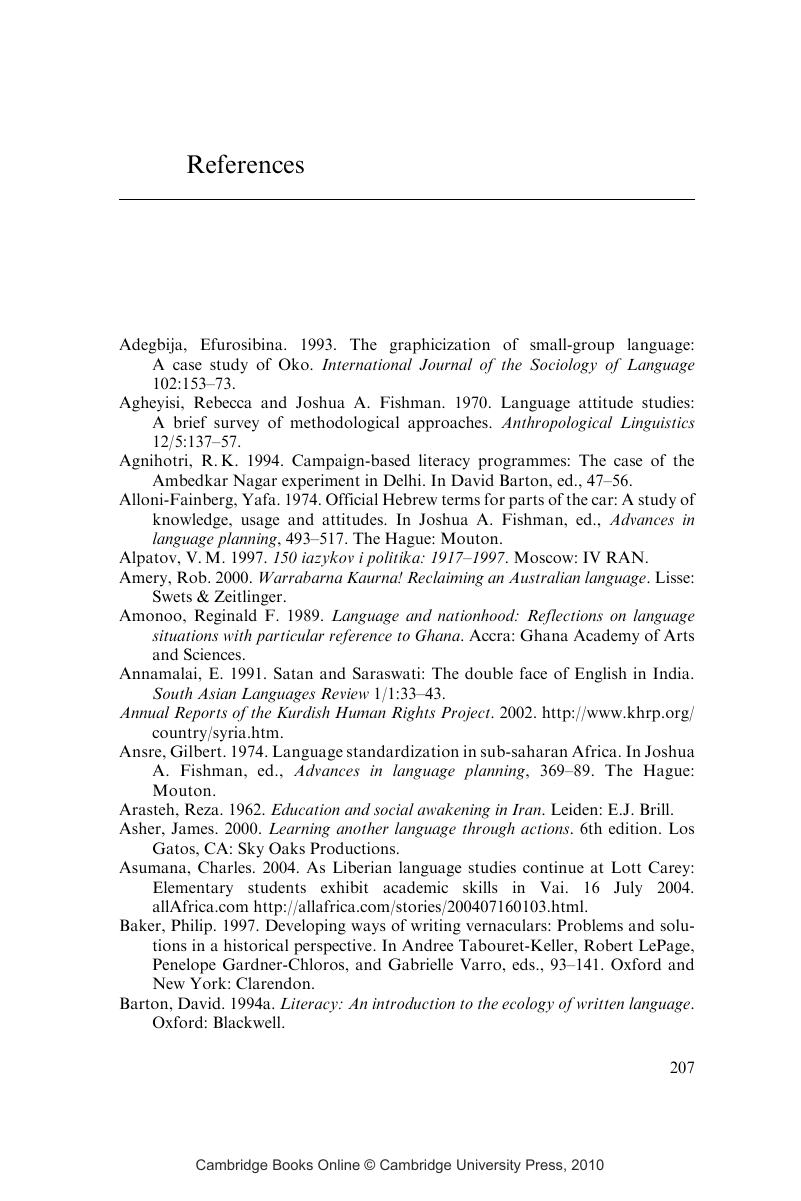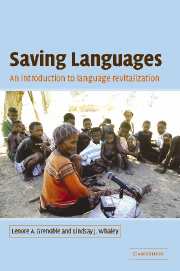References
Published online by Cambridge University Press: 04 December 2009
Summary

- Type
- Chapter
- Information
- Saving LanguagesAn Introduction to Language Revitalization, pp. 207 - 221Publisher: Cambridge University PressPrint publication year: 2005



